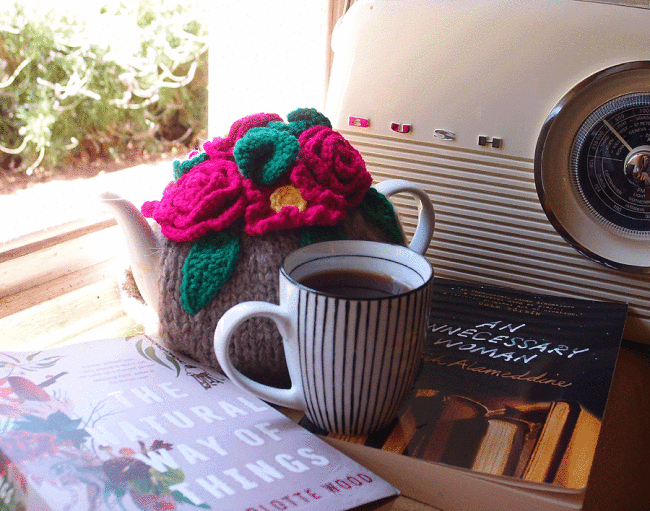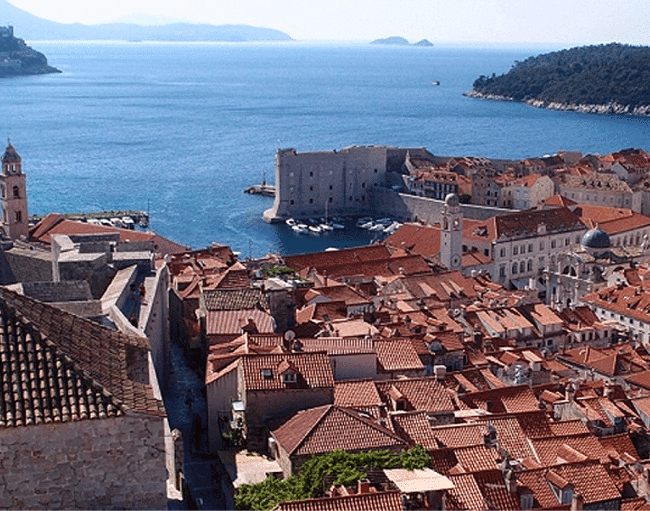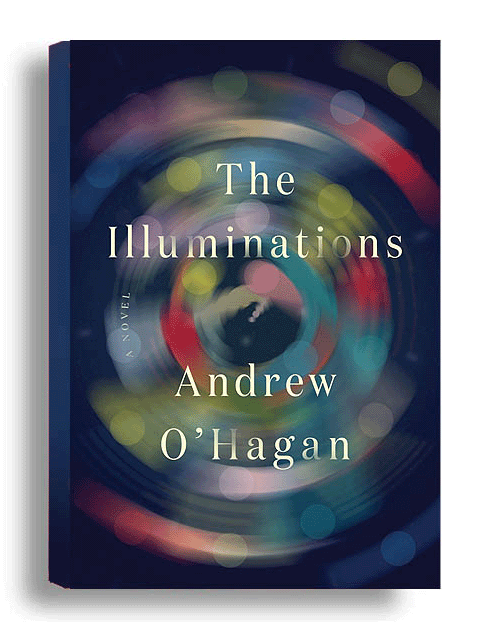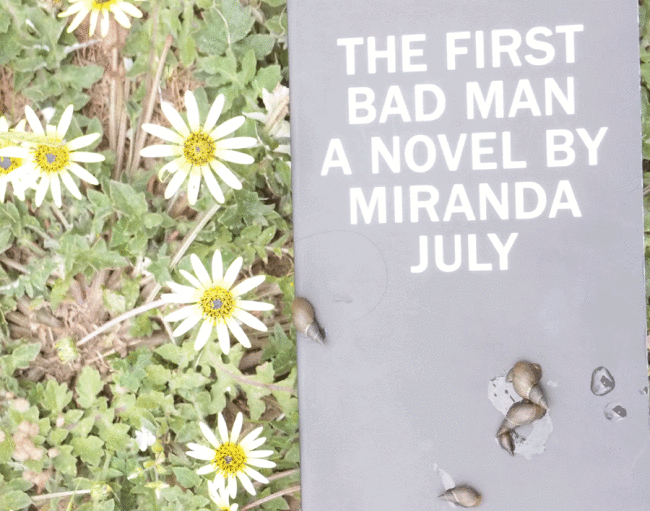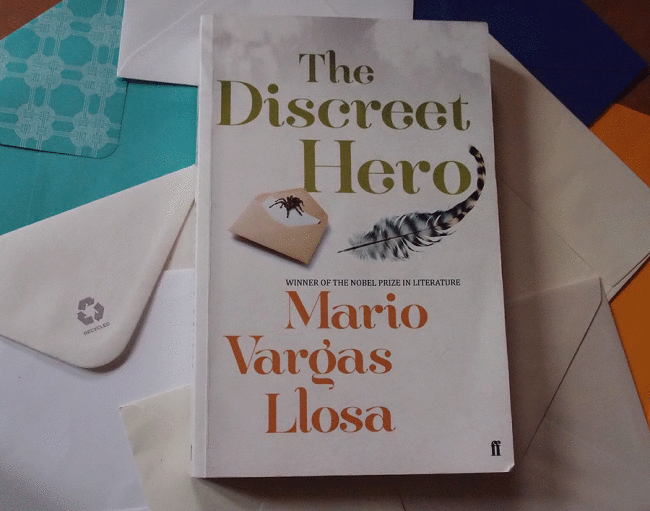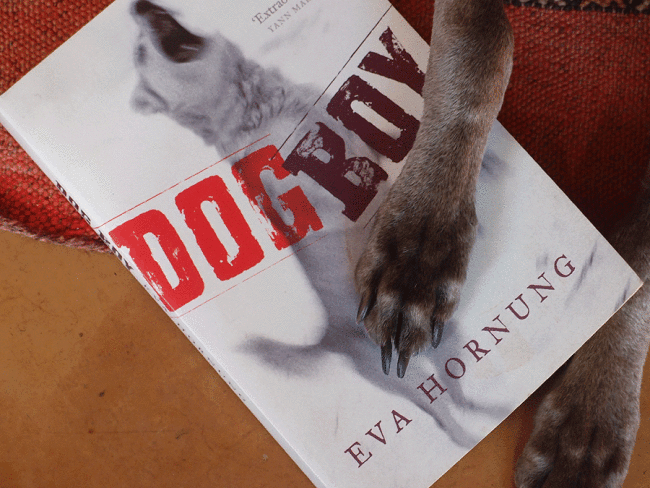I love to read, write & travel. Sharing the joys and disappointments of all three is what makes life good.
All posts by Oak Web Design
OTHER STUFF
CONTACT
Get in touch
For events and media please contact relevant publicist
AUS publicist: Laura McNicol Smith
laura.mcnicolsmith@affirmpress.com.au
US publicist: Karen Fink
kfink@penguinrandomhouse.com
UK publicist: Lucie Cuthbertson Twiggs
LCuthbertsonTwiggs@penguinrandomhouse.co.uk
ECHO OF WAR IN DUBROVNIK’S OLD TOWN
Echo of War in Dubrovnik’s Old Town
Old Dubrovnik is beautiful, but the scars of war remain.
War was not what we expected when we arrived in Dubrovnik’s Old Town.
We had come to walk the medieval ramparts, gaze at the sapphire blue of the Adriatic Sea, and stroll narrow lanes and the wide thoroughfare of the Stradun, stopping for ice-cream whenever the whim took us.
The war that tore apart the Croatian city nearly 25 years ago was definitely not on our itinerary. But war leaves a trace in the fabric of a place, in its people and in its architecture, and while time and international aid have restored the beauty of Old Dubrovnik, scars – faint but permanent – are everywhere.
Luža Square marks the end of the Stradun and is a vision from a fairytale. Watched over by Maro and Baro, two life-sized brass bell ringers in the city’s bell tower, the Square welcomes up to 10,000 visitors a day during peak season, almost all of them day trippers from the many cruise ships making their rounds.
If cruising is not your thing and you are lucky enough to have checked into one of the few hotels, or rented a local’s apartment, as we have (a wardrobe full of clothes and drawers full of knick-knacks included), you will welcome the twilight transformation of the Old Town as the cruisers leave through the Pile Gate to return to their ships.
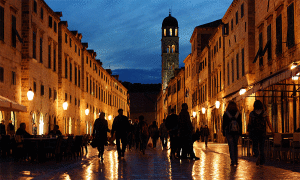
The centre of Dubrovnik’s Old Town. Photo: Jonathan Cohen/flickr
We are surprisingly few, us over-nighters, and it feels like an enormous privilege to be left behind with all this beauty. The wide limestone paving of the Stradun is worn smooth and shining by tourist footfall (no cars are allowed inside the city walls), and this evening it reflects a gathering storm.
We have planned to walk the wall then find a laneway restaurant for dinner, but when the rain starts we are forced to change our plans. We shelter under the colonnade skirting the Sponza Palace and notice a small sign advertising an exhibit of war photos.
The photos were taken during the Siege of Dubrovnik, in 1991. This history has been asking us to recognise it ever since we arrived. All around the city walls there are large boards recalling the Croatian War of Independence and the destruction of Dubrovnik. If they didn’t exist, you might never know there had been a war here – the city walls have been repaired, the burned buildings have been rebuilt with bright terracotta tiles replacing their shattered roofs, and tourists fill the shining town in even greater numbers than they did before the conflict.
The only reminders are pockmarks from bullets and shrapnel, and sombre plaques of remembrance on unremarkable houses in almost every street inside the thick, but not-so-protective, walls of the town.
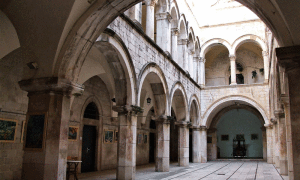
The photographs line both sides of a narrow stone room in the basement of Sponza Palace. We take our time; the images demand it.
There is one in particular. It is black and white: three men and a dog taking shelter on a stairway between thick stone walls. Where the stairs end it is black, perhaps a door is closed to them; no light comes from it; it offers nothing but its stoop. The men are not related, not even friends, as far as I can tell. There is no connection between them, no eye contact, no reassuring gestures. An old man stands on the top stair. He’s wearing a suit-jacket and tie, and what looks like a black beret over thin hair. His face reveals nothing of his state of mind, but he presses his back against the wall, like a child having his height measured. He wants to flatten himself, sink into the wall’s protective façade, and disappear.
Crouched in front of him is a middle-aged man, though it is only his dark hair beneath a cloth cap, and his ordinary clothes, that hint at age. He bends his head toward his knees, his face is hidden and he is holding his hands over his ears. I can hear the echo of bombs, but they don’t make my heart pound, or twist my bowel like they do his – anyone would recognise his terror.
Then, on the bottom step closest to the corner of the wall protecting them, is a man in polished shoes. His left hand, the only blurred image of the photo, is stroking the flank of an old dog. With his right arm he holds the animal around the head, muffling the fearful sounds. His expression is that of a father soothing a child, pretending calm.
The photographer, Pavo Urban, was 22 when he took these images. He must have stood in the street to capture these men in their fear – except for the soothing hand, the photograph is crisp; time has been taken to focus and achieve depth. He took a risk.
I look back at the other photographs – he took many risks to document the destruction of his beloved city, and to honour the experience of its people. Between two buildings a group stand waiting – is that what war is about? Waiting for something to happen, good or bad?
The ground is carpeted in debris, and dark stains make me think of blood. A woman, not young or old, with a white scarf around her head, leans against the edge of a building – she is peeking around its corner. With the group so far behind her it is as if she drew the short straw. They are all waiting until it is safe to go out into the street – the street where Pavo Urban must be standing.
The evidence is everywhere now. I look from one photograph to another and I can see people cowering or waiting, frightened or resigned, all relatively safe between buildings. The main thoroughfare of the Stradun is empty; not a person, not a dog, just a shroud of smoke or an explosion of fire. And yet, these photographs exist. It was not empty. A young man stood with his camera, shooting roll after roll of film, propping up what was being torn apart.
Pavo Urban was born in Dubrovnik in 1968. In September 1991, he enrolled in a film course at the Academy of Dramatic Arts in Zagreb, but within weeks Dubrovnik was under attack. Pavo returned home to became a war photographer for the Croatian Ministry of information.
The Siege of Dubrovnik began on October 1, 1991, when the city was attacked by the Yugoslav People’s Army. It lasted seven months, but the heaviest artillery attack was on December 6.
That was the day Pavo Urban took photographs of a smoke-filled Stradun. It was also the day he photographed the plaza in front of Sponza Palace. I look at that photograph now. It is ghostly; a pall of smoke obscures everything. In the centre is Orlando’s Column – we admired it on our way into the Palace. Orlando is the legendary liberator of Dubrovnik, but in the photograph he is protected behind board; like the city’s walls, his sword and shield were useless against bombs and bullets. But the flag of liberty stills flies above it, intact. To me it looks hopeful, but I wonder how it looked to Urban, through his lens.
It is the last photograph he took; the last thing he saw. A moment later he was hit by a shell fragment, and he died at the city gate.
It is almost dark when we emerge from the Palace. The rain has stopped but lightning illuminates the darkening sky above the Stradun. It is an extraordinary sight, and all around us people have their cameras out ready to capture the next explosion of light for their holiday albums.
Our camera remains capped; our mood is solemn.
Through his photographs, Pavo Urban has shown us more of Dubrovnik, its people and emotional heart than we ever would have discovered alone. We stand, for just a moment, in remembrance.
Then we walk away from Luža Square and into the city’s network of tight lanes, grateful for the peace they now enjoy.
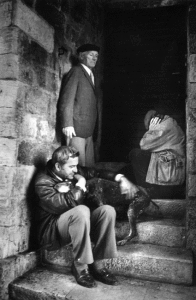
Getting there
Major airlines, including Qantas, fly regularly to Dubrovnik from Sydney, Melbourne, and other Australian cities.
Jadrolinija operates an overnight ferry service from Bari in Italy to Dubrovnik from $75 per person.
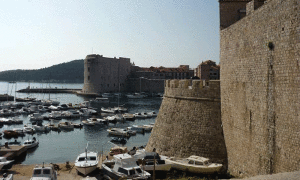
Places to stay
There are few hotels in Dubrovnik’s Old Town, but plenty of apartments.
At the top end, St Joseph’s is a boutique-style hotel in a beautifully renovated 16th-century house. Rooms start from around $250 per night.
An apartment or B&B is the cheapest option if travelling as a family or in a group and Venere.com has plenty of options inside and outside the Old Town walls.
The Dubrovnik Youth Hostel is a 15-minute walk from the Old Town and a dorm bed will cost around $25 per night.
Tours
The Dubrovnik Card will save you time and money if you plan to see a number of Dubrovnik’s main attractions, including the city walls, the Rectors Palace and various galleries and museums.
Sponza Palace is open daily and, while there is a small cost to see some parts of the Palace, the photographic exhibition of the Defenders of Dubrovnik is free.
Published in In Daily, 16 June, 2015
THE SWEET SMELL OF POVERTY
The Sweet Smell of Poverty
I love trains. Inside and out they reveal so much about a place and its people.
The train from Rome to Naples is hot and crowded, a far cry from the air conditioned comfort of our journeys north. Before we even start moving, scents of life begin wafting through the carriage. Italy is suddenly more interesting (and a little smellier). As the train idles a man makes his way through the carriage leaving notes written in English on the window sill of each seat.
He leaves the flowery scent of expensive eau de cologne in his wake, so I am surprised to read his note and learn that he cannot find work and needs money to feed his three children. I dig around in my bag for change.
Then it occurs to me that this beggar might be playing us tourists for fools. How many people on the poverty line can afford expensive eau de cologne?
When he passes through the carriage the second time, I look away like everyone else. Only the pleasure centres of my brain register his existence as the sweet scent of jasmine cuts through the train’s assorted odours.
An hour later the open windows have brought a breeze and the drift of acacia blossom to clear my mind. I recall a recent visit to a perfume shop where I pretended to browse the shelves with the intention to buy.
I sprayed the tester of Chanel No. 5 liberally on my wrists, neck, the full length of my scarf. I wanted this sweet smell to override all other smells that were being harboured in my clothes and skin. I hoped it would last for days, I prayed it would last for weeks, I fantasised it would impregnate my back pack. Alas, hope, prayer and fantasy are no substitute for a real bottle of perfume. After a day the magic had worn off.
On the train, it occurs to me that the beggar may have entered a parfumerie and used a tester. So perhaps he does deserve a little loose change for his hungry children. I’m beginning to realise that a clear conscience in Italy is no more than the price of an espresso.
Published in The Australian, June 30, 2012
THE ILLUMINATIONS
By Andrew O’Hagan
Published by Faber & Faber, 2015
The recurring motif in this book is light, which isn’t surprising given the title. But it is not immediately clear what is being illuminated. Early on we are introduced to the Blackpool Illuminations, a festival of light that has been drawing people to that English seaside town since 1879. But we don’t return to Blackpool until much later. In between lays the story, and it is a good one, with two interweaving narratives that initially could not be further apart, but which come together gracefully.
At the heart of this book is Anne Quirk, a woman in her eighties living in a retirement home in Saltcoats on the west coast of Scotland. The electricity sockets in her kitchen have been taped over with Elastoplast, and the rings of her stove are covered up to prevent her from cooking. Anne’s neighbour, Maureen, pops in frequently to sort out small confusions, and to hear Anne talk about her past; about living in New York, about taking photographs and about the love of her life, Harry Blake. There is a sense of time running out for Anne, of days darkening and memories falling like autumn leaves. Maureen tries to catch them, and when letters arrive from Anne’s Grandson, Luke, Maureen reads them aloud.
Luke is a captain in the British army, though he might have been a poet. During the long hot wait for landmines to be dug out of the Afghan road on which his convoy is travelling, he tells his boys to write their last letters, ‘a quick note just in case’ writes O’Hagan. They write them while waiting for their turn on XBox. When Luke sits to write his letter, it is his grandmother, rather than his mother, that he addresses. When he was a boy, Anne had talked to him about art and books, she had shown him how light can illuminate the most ordinary object and make it beautiful – she ‘had given him the world not as it was but as it might be.’
O’Hagan moves effortlessly between the soft furnishings of a Scottish retirement home and the harsh desert heat of Afghanistan. He has so convincingly captured the mood and vernacular of both, that I imagine he was imbedded, alternately, with the Royal Highland Fusiliers during a recent Afghan campaign, and with a bingo group that met weekly at a local aged care facility somewhere in Scotland. But it is not his skill as a writer of place that makes this book so enjoyable, it is his sensitive understanding of relationships, and his ability to show human frailty and strength with subtlety and compassion.
In a photograph, it is the play between shadow and light – what is seen and what is unseen – that makes for a beautiful composition. This book has been composed in much the same way. O’Hagan reveals just enough about his characters to convince the reader their lives are worth investing in, that the story hidden in the shadows of the text is worth perusing. This is a well written book with a satisfying conclusion.
And one more thing, for those who do not know, the Blackpool Illuminations are turned on at the beginning of autumn, at a time when the seaside season is coming to an end. They stay on for more than two months, adding light and colour to the darkening days leading up to winter. I didn’t know this when I read the book, and I didn’t need to, but it was illuminating, non-the-less.
Produced and recorded for Radio Northern Beaches, Sydney
Published in In Daily, 17 June, 2015
THE FIRST BAD MAN
A Novel by Miranda July
Published by Canongate Books, 2015
I’m going to start this review by saying things that may turn prospective readers away from The First Bad Man, but that is not my intention, so please bear with me.
Reading The First Bad Man felt a little like cleaning out my fridge. I was frequently disgusted, surprised by some of the content, but compelled by each disturbing discovery to keep going. Just like I can’t help lifting the lid on some mouldy mass in the bottom of my crisper to try and figure out what it is, I couldn’t help turning the pages of this book. A few chapters in I started to appreciate the deliciousness of what I was reading. If this book had a flavour it would be umami, that trendy new taste that Wikipedia says induces salivation and a sensation of furriness on the tongue, stimulating the throat and resulting in a lasting aftertaste that is difficult to describe.
The first chapter introduces the reader to Cheryl and her globus hystericus, an uncomfortable swelling in the throat that, at its worst, causes saliva to pool and requires frequent spitting because of an inability to swallow. I wanted to stop there – and I’m sure you want me to stop there – but Cheryl intrigued me, so I kept reading, and I’m glad I did.
In The First Bad Man Miranda July celebrates and denigrates human weirdness, revealing it as both frailty and conceit. She has created a small cast of characters that few would want to identify with but many would relate to.
Cheryl is middle-aged, lives alone, and is a long-time employee of ‘Open Palm’, a not-for-profit that teaches women’s self-defence and distributes role-play DVDs. She is awkward and submissive, and when the owners of Open Palm ask if their nineteen year old daughter, Clee, can stay with her for a while, she says yes, even though she’d like to say no.
The relationship between Cheryl and the selfish, oafish, bullying Clee, is the back bone of this story, and at times it is so repellent that all my instincts told me to look away, but I couldn’t. Other relationships in Cheryl’s life provide relief, of sorts. None of them are functional and most of them are strange – there’s a love interest, her accidental therapist, the enigma of her gardener and, most intriguing of all, the bond she has with Kubelko Bondy, the soul of a baby she loved as a child. These are bizarre relationships between seriously flawed individuals, but each reveals vulnerabilities and strengths – hers and theirs – that make this book quite extraordinary.
It’s difficult to say what this book is about without initially conjuring clichés – none of which apply. It is a coming of age story, but Cheryl is in her mid-forties; it’s a satire – and the narrative weaves-in all manner of Southern Californian bunkum, from re-birthing to chromotherapy (as if the essence of white can cure a fetid case of athletes foot) – but the emotion is recognisable and true; it’s sexually explicit, but not at all erotic; it’s a love story, but for much of the time I couldn’t help thinking I was reading a feminised version of Fight Club. In the end it’s about motherhood, although not as we commonly understand it. By this stage I was totally convinced, and deeply moved, by the authenticity of the fiction.
Miranda July has created a unique and subversive story that takes the characters, and the reader, on an absurd journey towards fulfilment. If at first you find it repulsive, hold your nose and keep reading.
Produced and recorded for Radio Northern Beaches, Sydney
THE DISCREET HERO
by Mario Vargas Llosa
Published by Faber & Faber, 2015
Oh, where to start with this review? Perhaps with the author: Mario Vargas Llosa was born in Peru in 1936 and is one of the most significant Latin American writers of his generation. So significant, in fact, that in 2010 he was awarded the Nobel Prize in Literature. Now to the reader: I was born much later, on the other side of the world, and while I had a love affair with the magical realism of Latin American writers such as Gabriel Garcia Marques and Isabelle Allende in the 1990’s, I have never written a novel, and the Nobel Foundation will never, ever, ever, bestow a prize on me. I tell you this so that you can ignore all the critical things I am about to say, because, let’s face it, what would I know.
So, to the story: The Discreet Hero is set in modern day Peru and tells two tales that intersect late in the book. The first is of a self-made man who refuses to give in to extortionists – even in the face of arson and kidnap – because he lives by the advice of his poor, uneducated but very hardworking father, to ‘Never let anybody walk all over you’ – we are told this, over and over again, and Llosa’s habit of repeating what we already know is my first criticism (with all due respect, of course). The second narrative is of an old and wealthy patriarch who marries his house-keeper and thereby cheats his hateful sons, known to all as ‘The Hyenas’, of the inheritance they would most likely squander. When he flees on his honeymoon the fallout is felt most keenly by his trusted confidante, Don Rigoberto, a cultured Europhile given to sensual pleasure of all kinds and, most-likely, Mario Vargas Llosa’s alter-ego.
This book started well, and I quickly felt like I was reading a lightweight detective novel. It didn’t quite fit with the calibre of the author, but, between you and me, this came as a bit of a relief – it’s often hard work reading Nobel Prize winners. The expansive roll-call of characters and relationships reminded me of those other Latin American stories I have loved so much, and I was particularly intrigued by the very mysterious figure of Edilberto Torres. He pops up throughout the book, and the possibility he was the devil became reason enough to keep reading.
So I did. And I soon got to know who was who, and what was where, but the experience of slotting it all together was unsatisfactory, and the whole was no more than the sum of its parts, and perhaps, it was less.
What I did enjoy was Llosa’s evocation of place and its role in the mood of the story. There is also a dexterity in the way Llosa superimposes dialogue from two separate conversations to shed light on the past and the present simultaneously – once I realised what was going on, it was easy to keep up, and a pleasure to read. But these literary delights were not enough.
It may be that The Discreet Hero has suffered in its translation from Spanish to English. Or, it may be that the editor’s pen was stayed by the thought of deleting words written by a man of such literary renown. Or, it may be that I cannot appreciate Mario Vargas Llosa, because I have not read any of his previous stories. While this book stands alone, some of its characters have seen the page before. If I was familiar with them, I may have recognised and enjoyed the many references to their habits and previous adventures. But I wasn’t familiar, and as these references rarely had any bearing on what was going on in this story, they seemed only to confuse and clutter. How is this relevant? I found myself asking, again and again.
The one element that kept me reading when all else was tempting me to stop was the enigmatic Edilberto Torres. So what of him? Well, who knows? He and his literary potential were vaporised in a dull and saccharin ending that made me wish I’d read an Agatha Christie novel instead, just for the big reveal when all the little hints and seemingly irrelevant details coalesce into a satiating conclusion. No such luck with this story, though it’s possible Edilberto Torres will turn up in the next novel, and if I read it I will have all the satisfaction and enjoyment of a reader in the know – it might well be worth it, but I’m unlikely to seek it out.
Produced and recorded for Radio Northern Beaches, Sydney
LOST & FOUND
by Brooke Davis
Published by Hachette, 2014
I loved this book. Like many people who’ve read it, I found it warmed my heart, tickled my funny bone and made me think, deeply.
Lost & Found is the story of seven year old Millie Bird, Eighty-seven year old Karl the touch-typist and Eighty-two year old Agatha Pantha. They are an unlikely trio, with unlikely names who get into all sorts of unlikely situations during a road trip in search of Millie’s mother. Everyone in this story has been left behind, even the minor characters, but the texture of each person’s grief is unique. Sometimes it is smooth and reflective and you can feel their grief because it would be your own. Other times it is like the nap of velvet; look at it one way and you see a woman who has lost her husband, look at it another and you see a woman who has lost her self.
Lost & Found is a funny book about grief and loneliness, and, as unlikely as it all is, it worked for me. The poignancy of loss, experienced by each character at the start of the story, is not dulled by the playfulness of Brooke Davis’s style. Rather it hums like a base note throughout, and I never felt the seriousness of the themes was overpowered by the melody of the story. I can’t imagine this book without the sweetness of that melody – with so much loss, it would be an unbearable read.
There is little more I can tell you about the plot without re-writing it, and I have not the talent of Brooke Davis. So instead I want to alert the prospective reader to another far more subtle pleasure of Lost & Found – it’s celebration of words.
Throughout her book, Brooke Davis plays with, explores and venerates words. They are not just the vehicle by which she travels along this story; they are the scenery, the background music, the glue that binds her characters. Karl’s fingers habitually type out every word he says, and his pockets are full of dashes stolen from computer key boards. On their own, they have no value, but he arranges them to spell out the words I AM HERE, imbuing the dashes, and his elderly , invisible self, with meaning.
Agatha insists that any observation she makes with a ring of wisdom to it be written down immediately – ‘Never trust a woman skinnier than you!’ she shouts to Millie and Karl, then, ‘Write that down!’
For Millie, the words of strangers are curiosities she collects into poems as she walks through the carriage of a train – ‘Sandwiches / What? / and curtains / read this / potatoes’ . Words are also the cause of much confusion, and source of all her hope – IN HERE MUM she writes, over and over again.
The sound of words, their shape and flavour, are important to Brooke Davis, and I think Lost & Found is an ode to their power and potential. This is just one of many descriptions that brought me joy:
They yell outside the bakery, the supermarket, the pubs and in the main thoroughfare, chopping at words as though throwing their sentences into a blender.
Despite being a best-seller, this book is not universally loved, but neither is the sound of a Mr Whippy van, or the taste of ice cream on a hot day, or the scent of Jasmine at the end of a long wet winter. Some can’t get past the cute names, peculiar stereotypes and comically absurd situations, to appreciate the deeper reflections on ageing and love, on depression and devastating loss, on redemption, acceptance and gratitude. Or, on the power of words to hurt and to heal. I am reminded of the adage that a spoonful of sugar makes the medicine go down – there is serious intent in this book, and it has been delivered in the most delightful way.
Produced and recorded for Radio Northern Beaches, Sydney
DOG BOY
By Eva Hornung
Published by Text Publishing, 2009
Yann Martel – he who wrote The Life of Pi, one of my favourite books of all time – describes Dog Boy as ‘Extraordinary’. This word is printed in quotation marks on the cover of the book, and it is the reason I picked it up from the pile of pre-loved tomes at my local second-hand book store. Of course I doubted it would be ‘Extraordinary’ – these superlatives are often found on the front of books I pick up and I am too often disappointed – but not this time.
Like The Life of Pi, Dog Boy is a story that uses animals to explore humanity. It is fascinating and shocking and heart wrenching, but it is compelling, and written with such insight into human and canine behaviour, that the events of the book are completely believable.
It is about a Russian boy, called Romochka, who is abandoned by his human carer and adopted by the matriarch of a family of feral dogs. It is an ancient story, but unique in its telling. From Romulus and Remus, to Tarzan, to Mowgli, myth and literature have placed helpless children in the care of wild animals and challenged us to rethink what it is to be human and what it is to be animal. They are never mutually exclusive states of being. When real life examples are found, and every now and then they are, we are horrified by the tale of human neglect and awed by the possibility of animal compassion.
Besides Romochka, most of the characters in Eva Hornung’s book are dogs. Without a hint of anthropomorphising, she has managed to convey their personalities and peculiarities as vividly as any human character, and so I was invested in the lives of these animals and convinced of the truth of their experience. I finished Dog Boy not only satisfied with a good read, and moved by a well told story, but with a feeling of having understood something that has always been beyond me. Let me explain.
As a child, I never had a dog and was generally wary. My own children were not going to be similarly deprived, and three years ago we bought a whippet who goes by the name of Bilbo. I have fed him and walked him and fallen in love with him, but I must admit that I have never understood him. Why, for instance, does he rub his neck in bird poo, why does he have to wee on every post and clump of grass, why does he love my husband more than me, and me more than my children? When I walk him and we come across other dogs I keep a wide berth, because I don’t understand them either, and I have always feared their barking and been perturbed by their need to sniff each other’s bottoms. Dog boy has been a revelation, a turning point in my understanding of these most beloved animals, and, while it may not have been the author’s intention, I am grateful for the lessons I have been taught by this book. Now, when I walk our dog, I show a little more respect for the social conventions of his species; I let him sniff bottoms and wee where he likes. And I watch him: I’ve noticed that he tolerates small children more than big and I wonder, what would happen, if… ?
Whether you like dogs or not is irrelevant to your enjoyment of this book; it is about relationships and hardship, survival and hope. In a word Dog Boy is ‘extraordinary’ and it is now one of my all-time favourite books.
Produced and recorded for Radio Northern Beaches, Sydney

